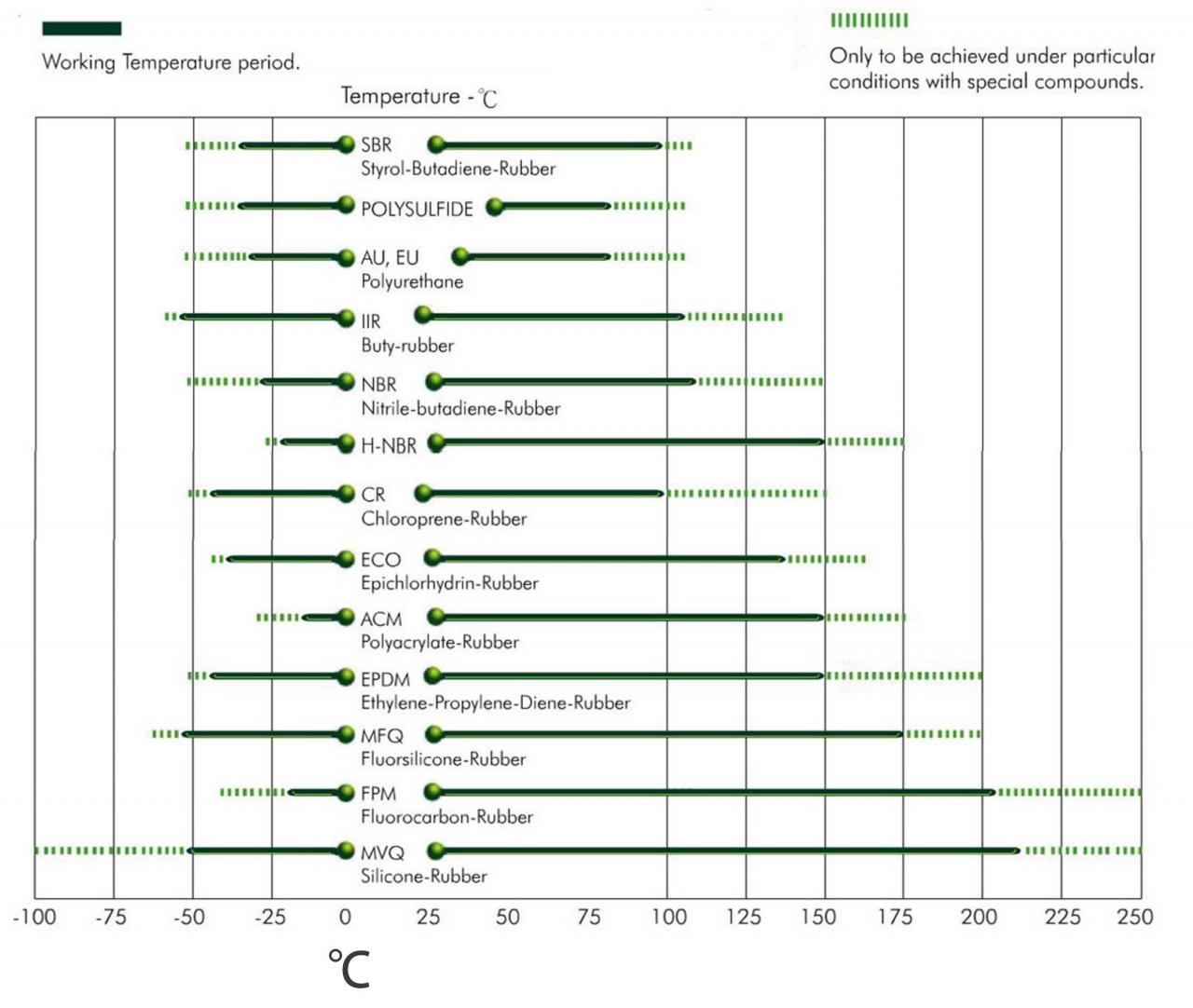Elastomer Working temperature
The temperature range is determined by the base elastomer used. This chart depicts the maximum temperature range for each elastomer. The temperature range for a specific compound may not reach these maximum limits. Higher temperatures may be considered if exposure is short or intermittent. Please consider your diaphragm will in right temperature.
| Material | Low end Operating Temperature | High end Operating Temperature |
| Butyl | -60°F / -50℃ | 250°F / 120℃ |
| EPDM | -40°F / -40℃ | 300°F / 150℃ |
| Fluorosilicone | -60°F / -50℃ | 350°F / 170℃ |
| HNBR | -20°F / -28℃ | 300°F / 150℃ |
| Neoprene® | -30°F / -33℃ | 212°F / 100℃ |
| Nitrile | -30°F / -33℃ | 250°F / 120℃ |
| SBR | -20°F / -28℃ | 212°F / 100℃ |
| Silicone GP | -60°F / -50℃ | 400°F / 205℃ |
| Viton® | -10°F / -20℃ | 400°F / 205℃ |

Service Temperature of Elastomers – Elastomer Temperature Range
In this case, ranges of service temperature differ from the flexible and durable materials. Most schematics assume the seal usage temperature ranges and process and service temperatures are the same. Use of rubber diaphragms or similarly sealed components requires bindings of credible performance ranges. Each has its own unique boundaries, and any shift from it warranty interfere with the dynamics of performance. With partners in design and engineering at Sealtech, we try to provide you with the best guidance we can get in such cases.
Typical Elastomer Temperature Ranges
In the following tables, sealants are listed with the temperature ranges in serviceable conditions and with serviceable rheology. The boundaries can change with the formulation of the compound, the ratio of active ingredients forming the compound, the ratio of the compound to the influence in question, and conditions generally surrounding the element in question.
- Nitrile (NBR): –33°C to 120°C
• Neoprene: –33°C to 100°C
• EPDM: –40°C to 150°C
• Silicone (general purpose): –50°C to 205°C
• Fluorosilicone: –50°C to 170°C
• Viton® (FKM): –20°C to 205°C
• Butyl: –50°C to 120°C
• HNBR: –28°C to 150°C
• SBR: –28°C to 100°C
In many cases, most of the serviceable conditions boundaries can be exceeded, not taking into account the way the seal overall loses its warranty, there is, however, the case of recurrent greasy ranges which will always assume the element will wear down and break to and including flexible tubes.

